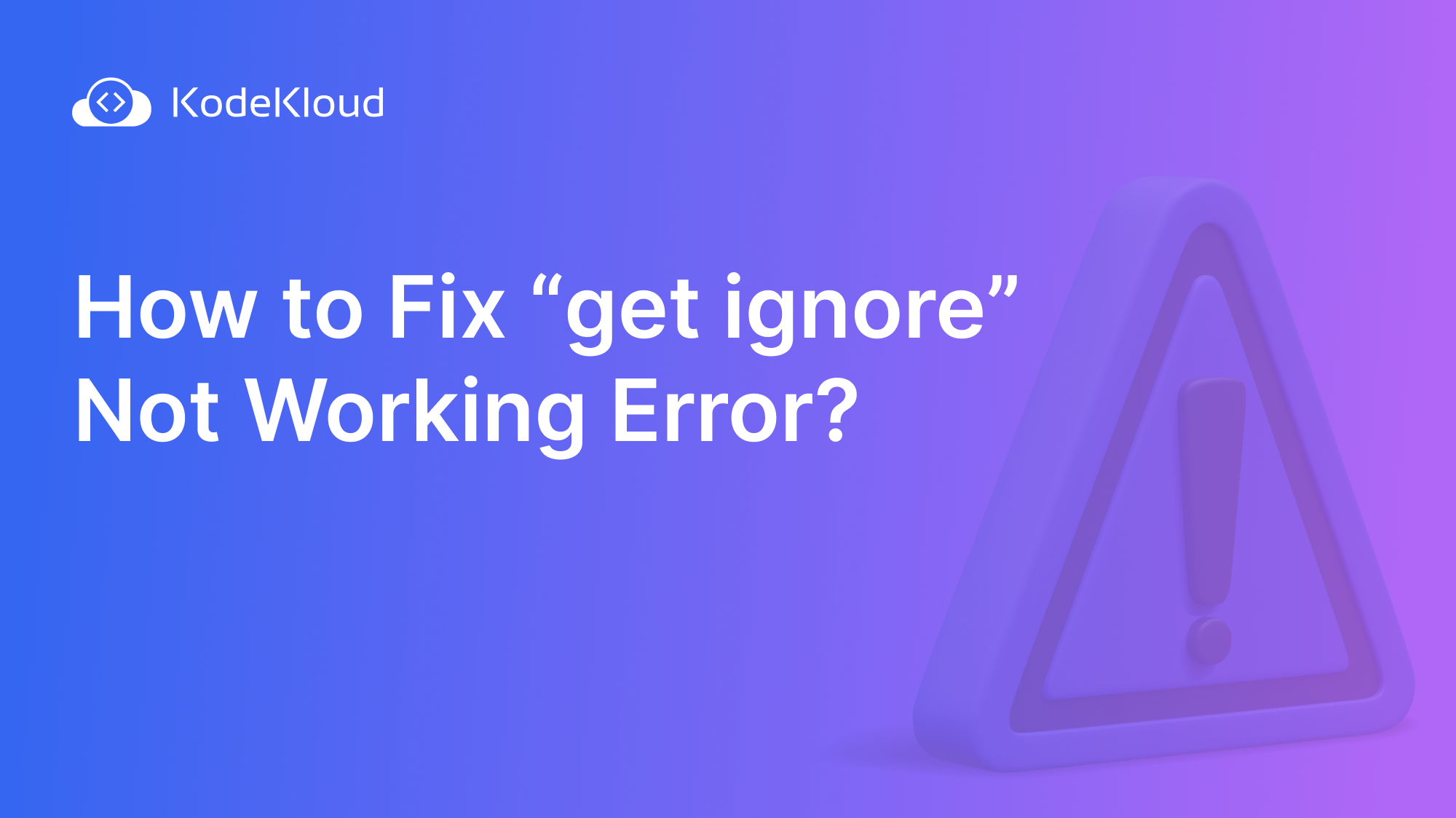As developers, we've all been there – meticulously crafting a `.gitignore` file to keep our repos clean, only to find that Git seems to ignore our instructions. The frustration is real, but don’t worry. In this guide, we'll reveal the reasons behind the notorious "git ignore" not working error, providing you with a roadmap to troubleshoot and rectify it.
Key Takeaways
- The `.gitignore` file is crucial for maintaining a clean repository by specifying files, directories, or patterns that Git should ignore during version control.
- Employing multiple `.gitignore` files for different project sections enhances organization and reduces the risk of overbroad or overly restrictive rules.
- Typos or incorrect syntax in the `.gitignore` file can render rules ineffective.
Importance of the `.gitignore` File
Before we dive into the solutions, let's understand why the .gitignore file is crucial. This file allows developers to specify files, directories, or patterns that Git should ignore during version control. This is useful when working on a project where some files or directories should not be included in the repository, such as files that contain sensitive information or temporary files that are generated during development. It ensures that only essential files are tracked, maintaining the consistency and focus of your repository.
What Causes `.gitignore` not to Work?
In this section, we'll explore common reasons behind `.gitignore` issues and provide solutions to address each one.
1. Files Already Tracked
Files that were previously added to the repository before being listed in `.gitignore` will continue to be tracked, even if subsequent rules exclude them.
- Solution: Untrack these files by running the following command and commit the changes:
git rm --cached <file>This ensures that the files are no longer staged for tracking.
2. Incorrect Syntax or Patterns
Typos or incorrect syntax in the .gitignore file can render rules ineffective, leading to unintended tracking or ignoring of files.
- Solution: Carefully review and correct the syntax. Ensure that each pattern is on a new line for clarity. Use appropriate wildcard characters such as * and ** to define patterns.
3. Global Configuration Conflicts
Conflicts between global Git configurations (e.g., core.excludesfile) and local `.gitignore` rules can result in unexpected behavior.
- Solution: Check global configurations to prevent conflicts with local rules. Adjust settings like core.excludesfile to complement rather than override repository-specific .gitignore rules.
4. Case discrepancies
Git is case-sensitive, and discrepancies in case between .gitignore rules and actual file names can lead to incorrect inclusion or exclusion.
- Solution: Ensure that the case in .gitignore rules precisely matches the actual case of files and directories in the repository. This is crucial for accurate file matching.
5. Encoding Discrepancies
Different default text file encodings across operating systems may cause interpretation issues for Git when reading the `.gitignore` file.
- Solution: Verify and ensure consistent encoding, preferably using UTF-8. This helps prevent interpretation problems and ensures uniformity across different platforms.
6. Cache and Index Problems
Cached information or issues in the Git index (staging area) can impact the application of `.gitignore` rules, leading to tracking problems.
- Solution: Use commands like `git rm --cached <file>` to untrack files and refresh the cache. This ensures that the index accurately reflects the .gitignore rules.
7. File Permission Problems
Incorrect file permissions for the `.gitignore` file may prevent Git from reading and applying ignore rules.
- Solution: Confirm that the file has the correct permissions for Git to access it. Adjust permissions using commands like `chmod`, if necessary, to allow proper reading and utilization by Git. Learn more about how to use chmod from this blog: How to Make a Bash Script File Executable in Linux
gitignore Best Practices
To avoid encountering the "git ignore not working" error in the future, follow these preventative best practices:
1. Implement .gitignore from Repository Initialization
Ensure a smooth start for your Git repository by creating and including a well-thought-out `.gitignore` file right from the beginning. This step establishes the groundwork for a clean and organized version control system.
2. Maintain Consistent Naming Conventions
Ensure uniformity in naming conventions throughout your project. Consistent naming guarantees that ignore rules accurately align with file and directory names.
3. Leverage .gitignore Templates as Guides
Make use of existing `.gitignore` templates as references when creating comprehensive and effective ignore rules. Templates serve as valuable guides for structuring your ignore file.
4. Use Multiple Specific .gitignore Files as Needed
For larger projects encompassing diverse components, consider employing multiple specific `.gitignore` files to cater to different areas of the repository. This modular approach enhances specificity and organization.
FAQs
Q1. Why is my '.gitignore' file not working even after following the troubleshooting steps?
Ensure that you've committed and pushed the changes to the repository after modifying the '.gitignore' file. If the issue persists, recheck for typos and syntax errors.
Q2. Can I use wildcards in '.gitignore' to match multiple files or directories?
Yes, wildcards like `*` and `**` can be used to match patterns. `*` matches any string within a directory, and `**` matches directories and their contents recursively.
Q3. How do I check the current status of files in my repository, including ignored ones?
Use the command `git status --ignored` to display the status of ignored files along with other changes
Q4. What's the difference between a local '.gitignore' and a global ignore file?
A local '.gitignore' file applies only to a specific repository, whereas a global ignore file, specified by 'core.excludesfile,' applies to all repositories on your machine. Local rules take precedence over global ones.
Q5. Is it possible to ignore files only in a specific branch?
Yes, you can use branch-specific '.gitignore' rules by creating a file named '.gitignore' in the branch and specifying rules applicable only to that branch.
Conclusion
The `.gitignore` not working error can present a puzzling challenge. However, armed with an understanding of potential causes and troubleshooting steps, you can easily regain control over your Git repository.
Remember, the .gitignore file is your tool to instruct Git on which files and directories to exclude from version control. If you encounter instances where Git is not ignoring certain files as expected, apply the troubleshooting steps outlined in this article to get your Git repository back on track.
Interested in learning Git with simple visualizations and animations as well as by solving lab challenges, check out our course:





















Discussion